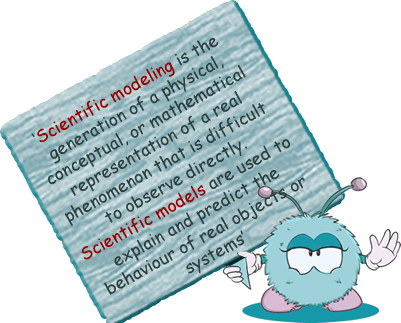Light - The Scientific Models Light is very important to us. It is vital to one of the most important ways we interact with our surroundings - vision. Light enters our eyes, stimulates cells on the retina and enables us to 'see' things. Understanding what light is and why it behaves as it does is something that has long been an interest to mankind. When we sum up what we know about something from observing it, we create something we call a 'model' to sum up all of the known behaviours and properties.
We know that our 'knowledge' of anything is only partial - so we do not consider it 'the whole truth' about the object or system. It is just one 'model' that helps us remember what we have leart about its behaviour and using our model allows us to predict what will happen if we are on the 'right track' - so using the model we can design investigations to 'refine' our model. Complex systems often have several models that are used to describe them - each model is able to help us understand one aspect of the system.
|
Follow me...
|



 Models of Light
Models of Light


